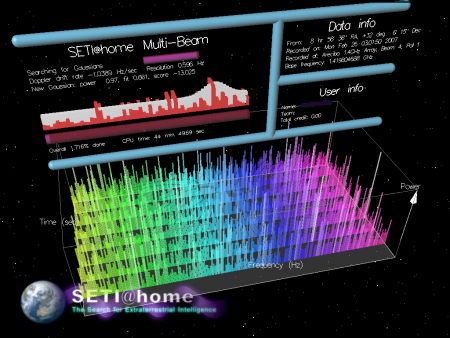October 25, 2016 – In a paper to be published in the Astronomical Society of the Pacific journal, Ermanno Borra and Eric Trottier, Physics Department, Laval University in Quebec, report an analysis of 2.5 million spectra from the Sloan Digital Sky Survey that show 234 stars are a source of very similar signals that may be of extraterrestrial intelligence (ETI) origin. In other words, the signals don’t fit known physical or natural phenomena.
The signals detected are coming from only a small fraction of the sky survey, 234 of 2.5 million spectral images. That’s less than 1/1ooth of 1% of the signals studied. The signals also come from a small fraction of the stars within a small spectral range.
In the researchers’ words, “The fact that they are only found in a very small fraction of stars within a narrow spectral range centered near the spectral type of the sun is…in agreement with the ETI hypothesis….However, at this stage, this hypothesis needs to be confirmed with further work.”
Signals studied were obtained from the fall of 2008 to spring 2009 and emanated from 120,000 stars.
The authors recognized that what they were studying could be a previously unknown stellar phenomenon, something they describe as emanating from stars with “highly peculiar chemical compositions.”
They also ruled out noise pollution of near-Earth origin that could corrupt the observed data.
Why did they settle on suggesting an ETI origin?
Their interpretation of the signals is based on research done at SETI, the Search for Etraterrestrial Intelligence project that has been searching for ET since radio telescopes first were pointed at the stars. In 2012 a paper on the subject suggested that an ETI could send pairs of light pulses separated by constant time intervals to generate spectral modulations. Such signals which would resemble pulsating laser light with distinctive time intervals that would alert those on the receiving end that they were of ETI origin.
That’s what Bora and Trottier discerned from their analysis of the Sloan Digital Sky Survey data. And here are some of the points they raised about possible causes:
- The signals could be rapid pulsations originating in the atmospheres of stars. They argue, however, that the rate of pulsations appear “unrealistically small for stars.”
- The alternative that the signals are generated by ETI is based on the characteristics of signals predicted in the 2012 paper.
The question of the weakness of the signals is dealt with as follows. The authors argue that although an ETI could send a strong signal requiring significant amounts of power, producing a weaker signal that can be broadcast through a wide range of space is far more effective if the intent is to inform others of your existence.
The fact that the signals emanate from a spectral range of stars similar to the Sun makes the ETI origin even more likely. The authors argue that sun-like stars are more likely to have planets capable of producing ETI. To date, SETI searches have confined themselves to sun-like stars.
But why are all of these emanations broadcasting with similar time separation pulses? Wouldn’t different ETI choose randomly different signals to announce their presence. The authors write, “This is a highly speculative issue that may have several explanations. A possible explanation that makes sense is that all ETI use the same time separation to make it clear that the pulses all come from ETI.”
Could we send signals into space in a similar way? The answer is yes. We have the technological capability today to project signals that could be detected 1,000 light-years away. Imagine an older ETI would have technology capable of broadcasting signals even further.
Before the invention of the laser, the idea of light-based signaling would have been unthinkable to humans. But now we have that technological capability and in fact are using light to enhance Deep Space communication for future robotic and human space missions.
The research received funding from the Natural Sciences and Engineering Research Council of Canada, the Alfred P. Sloan Foundation, the National Science Foundation and the U.S. Department of Energy Office of Science.
For those who read alien science fiction stories and search the skies for UFOs, you now have some evidence, albeit speculative, that ET is real.










